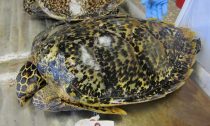
The shell of an adult hawksbill sea turtle consists of about a dozen overlapping scales colored with streaks of gold, brown, orange, and red. Hawksbills have long been hunted for their shells—the ancient Romans, for example, fashioned the scales into combs and rings.
Hawksbill scales are still being carved and polished into decorative and functional objects—tortoiseshell jewelry, trinkets, sunglasses. But the difference today is that killing hawksbills is forbidden. That’s been the case since 1977, when the Convention on International Trade in Endangered Species of Wild Fauna and Flora (CITES), the body that regulates cross-border trade in wildlife, assigned the hawksbill sea turtle its highest level of protection.
Meanwhile, the International Union for the Conservation of Nature (IUCN), which sets the conservation status of animals and plants, lists hawksbills as “critically endangered.”
According to the paper, which drew on data from the Atlantic, Pacific, and Indian Oceans, nearly nine million hawksbills were hunted for their shells during the 148-year period from 1844 to 1992. Because information about hawksbills in the Atlantic and Indian Oceans was spotty, the researchers say, their analysis likely doesn’t represent the full magnitude of the global hawksbill trade. (Read more about how GPS can help save these endangered sea turtles.)
The numbers, says Emily Miller, assistant research scientist at Monterey Bay Aquarium and the study’s lead author, are “staggering.”
David Godfrey, executive director of Sea Turtle Conservancy, a Florida-based nonprofit dedicated to ensuring the survival of sea turtles in the Caribbean, Atlantic, and Pacific, says “It’s not overly shocking to hear that the numbers were so large because we know how seriously the populations declined.” Godfrey says the study helps give a sense of the turtle’s historic population size and that the new information will help conservationists develop recovery plans for hawksbills. “It’s so hard to get historical data about the abundance of these animals,” he says.
Previous hawksbill trade studies, in 1987 and 1989, informed a 2008 IUCN report, which estimated that about 1.4 million of the animals were taken from the wild from 1950 to 1992. The new study extends the time frame back 106 years, based on trade data obtained from Japanese customs archives by Yoshikazu Uni, a professor at Tokyo University of Agriculture, in Abashiri, Japan.
According to Miller, previous assessments didn’t account for the varying ages and sizes of turtles and assumed instead that all traded turtles were adults. This assumption skewed estimates toward fewer turtles because studies used shipment weights determined from import records to estimate the number of adult turtles.
Early on, when the turtles were more abundant, Miller says, it’s likely that the easiest targets would have been taken first—in this case nesting adult females. But as adult turtles became harder to find, smaller young adults and juvenile turtles would have been targeted. Smaller turtles weigh less, so shipments with a mix of ages and sizes contain more individuals.
This “fishing down” theory was supported by the team’s analysis of seizures of contemporary turtle shipments, which were composed mostly of juveniles, indicating that today fishermen are indeed targeting smaller animals.
Patterns of trade
The most intense hawksbill exploitation—three-quarters of the entire trade since 1844—occurred between 1970 and 1985, the researchers found, with exports from Indonesia, Malaysia, the Philippines, Belize, and Honduras all increasing before the 1977 CITES trade ban.
The paper calls out China as a major present-day consumer of shells, traded illegally from Indonesia, Malaysia, and the Philippines.
Sea Turtle Conservancy says Japan’s black market also constitutes a threat to the survival of the species. Hawksbill shell combs have been popular in Japan.
According to the IUCN, hawksbills are also compromised by loss of habitat because of residential and commercial development, which encroaches on nesting grounds. Other threats include oil and gas drilling, fishing, pollution, and rising ocean temperature and acidity associated with climate change, which is degrading the turtles’ coral reef habitats. Sea turtles are important ocean grazers and help maintain the health of coral reefs and sea grass. According to the study, sea turtle population declines have likely altered sea ecosystem dynamics.
The researchers noted a connection between trade patterns and trends in illegal, unreported, and unregulated (IUU) fishing. They mapped areas with the highest levels of shell exports, and, Miller says, found that those areas “matched really closely with the countries that have the highest levels of IUU fishing.” Six countries—Indonesia, Thailand, India, the Philippines, Malaysia, and Vietnam—had a close match between historical turtle exports back to 1844 and IUU fishing rates, with Indonesia topping the list for both.
Miller says it’s likely that hawksbills are targeted in small-scale, artisanal fisheries with connections to international networks and that they’re also netted as bycatch by fishermen going after other species. “The strong links between IUU fishing and marine wildlife poaching and trafficking underscore the need for integrated monitoring and management of small-scale coastal fisheries and high-seas commercial fleets,” the study says.
Miller adds that consumers can help by buying sustainably sourced seafood to avoid sellers who are potentially involved in the illegal fishing practices that threaten hawksbills.
Kyle Van Houtan, director of science at the Monterey Bay Aquarium and another author on the study, says he hopes that by pointing out the magnitude of the hawksbill trade, the team’s findings will “really shine a bright light on the most endangered species of sea turtle we have.”




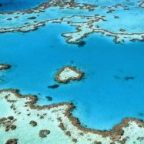
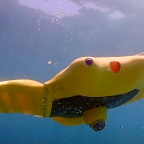
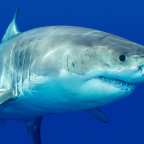

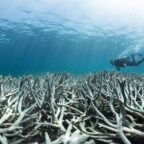
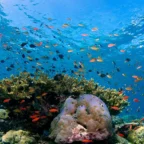
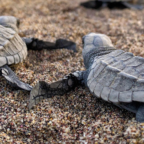

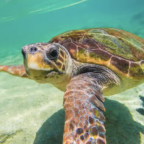
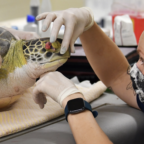


Social Profiles